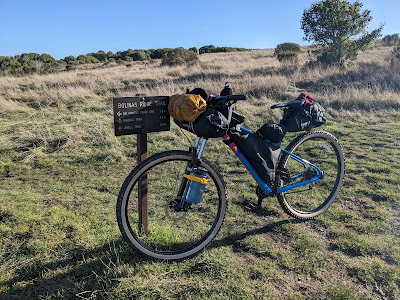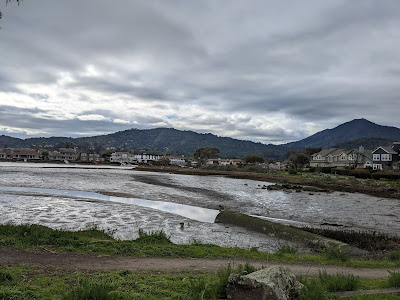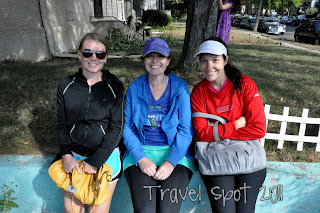As I have mentioned before, I have a folder of all of my important docs and a list of all of my accounts and important details. I often call this list "the death list" because it is the list of things to do after I die, but this sounds kinds of morbid, so I will retitle it the last to do list. I hope that this list will not be needed for a long time, but I am happy to keep changing it if that means I live a lot longer. However, I also do feel that it is important to have your affairs in order, just in case. This post is about item one on the last to do list, setting up a trust.
Before I get started, if you do nothing else or do not feel like reading this long post, at least do these two things: (1) Set up beneficiaries on any retirement accounts or Transfer on Death (TOD) designation on your other accounts. This allows worry free and probate free transfers of your money to someone else and even if you do not have a will or any other paperwork, the money will get into the right hands. (2) Complete an Advance Directive (see below for more info) form which will detail what you want done in case you are incapacitated (i.e. DNR).
But now, let's talk about why any of us would need a trust. A trust will help you to avoid probate. Probate is what happens when you pass away and the court has to approve your will and name or approve your executor. The costs of probate differ by state but in California, costs are based on the gross value of the estate and are 4% on the first $100,000 and then there is a sliding scale after that. Let's just say your assets are worth $100,000. That would be a $4,000 cost!! Also, this process can take six or nine or even twelve months, which can be a pain for your loved ones.
The alternative is to set up a trust. I always thought that a trust was something rich people had for their spoiled kids. This is not the case! A trust is something that protects you, outlines your wishes and minimizes taxes (and avoids probate!). When you die, your successor trustee (the person you want to carry out your wishes) can start doing what you outline right away without getting the court involved. Depending on your situation, setting up a trust should not be too difficult or costly. I spoke to two different trust attorneys and the going rate is around $1,500 - $2,000 depending on your situation and the number of properties you have (in CA it costs $200 per property to change the name on the title). Of course, you could probably also just Google it and fill out something online that would work, but I wanted the peace of mind that comes with having a professional help me. Plus, my job offers legal benefits, which are similar to health benefits where you pay a little bit month. This costs me about $360 per year, so the attorney fees for setting up a trust only cost me $360.
Additionally, not only will the attorney help with the trust, but they will also complete an Advance Directive, a will and a Power of Attorney form for you. If you have not already set these up, even if you do not have a trust, you should at least have these three things.
Why do you need these? Let's talk about each one separately. The Advance Directive conveys your wishes regarding your health in case you become incapacitated and outlines who has the right to make health decisions on your behalf. You can easily get these documents from the internet. Nobody wants a case of Terri Schiavo on their hands. Here is an Advance Directive form that I used in the past. These do vary from state to state so you should use one for your particular state. The other things you should write down and keep with your AD are things like: do you want to be cremated or if you want to be buried, where do you want to be buried, do you have a plot already, etc.?
We all know what a will is, so I won't go into too much detail; however, you may think that it doesn't matter because everything will just go to your next of kin, which is true. But having a will makes things easier for the people you leave behind, specifically appoints an executor (otherwise the state may do this for you) and can detail who will take care of your children, what your wishes are for your funeral etc. Again, you may think that you won't care because you will be gone, but it will make things easier for whoever is left to take care of your affairs. You can also note anyone you do not want to have anything, like creepy uncle Phil for example. This article is very helpful, and also has a free online version of a will that you can use to get started.
The Power of Attorney tells people who can make financial decisions on your behalf if something happens to you. We all think we are invincible but what happens if you are in a car accident and can no longer make your own decisions? The other option is to add someone as a joint account holder on your accounts, which will give them the freedom to use the money to pay for your care, pay your bills etc. However, if you don't feel comfortable with that, you should appoint a POA.
Okay! Let's go back to the trust again. Setting it up does take a little work, i.e. you do have to know who you want to get your stuff, who you want to handle your affairs etc. But once you have decided that, the actual process of doing the paperwork is very easy. For example, I had to give the attorney all of the information about my bank accounts (not numbers, just where the accounts are held), any investment accounts, any properties with addresses and any specific bequests. For who I was going to bequest anything to, all they need is the person's name. No social, no address, no phone. For anyone I wanted to give POA designation to, it was the same. So it was really not as complicated as you may think.
Also, just like most legalese, there is always a phrase to cover you. For example, very common language goes like this: I gift my 13 inch TV to my brother and if deceased, this gift shall lapse. What does this mean? It means if he is no longer around, the gift goes back into my estate. You can set this up however you want and the "if deceased" can literally be a list of 40 people who you want to have in order of importance, or you can give everything to a charity like Warren Buffet.
Do you have any of the abovementioned items? What steps have you taken to arrange your affairs? Do you have any tips to add or questions about the above?
Disclaimer: The information above is solely an opinion based my own personal experience. You do you. I am not a tax and/or financial advisor; nothing in this post should be taken as investment advice. I have no fiduciary responsibility to anyone reading this post. Please consult a financial advisor for investment advice. For my other posts regarding money, go here.















